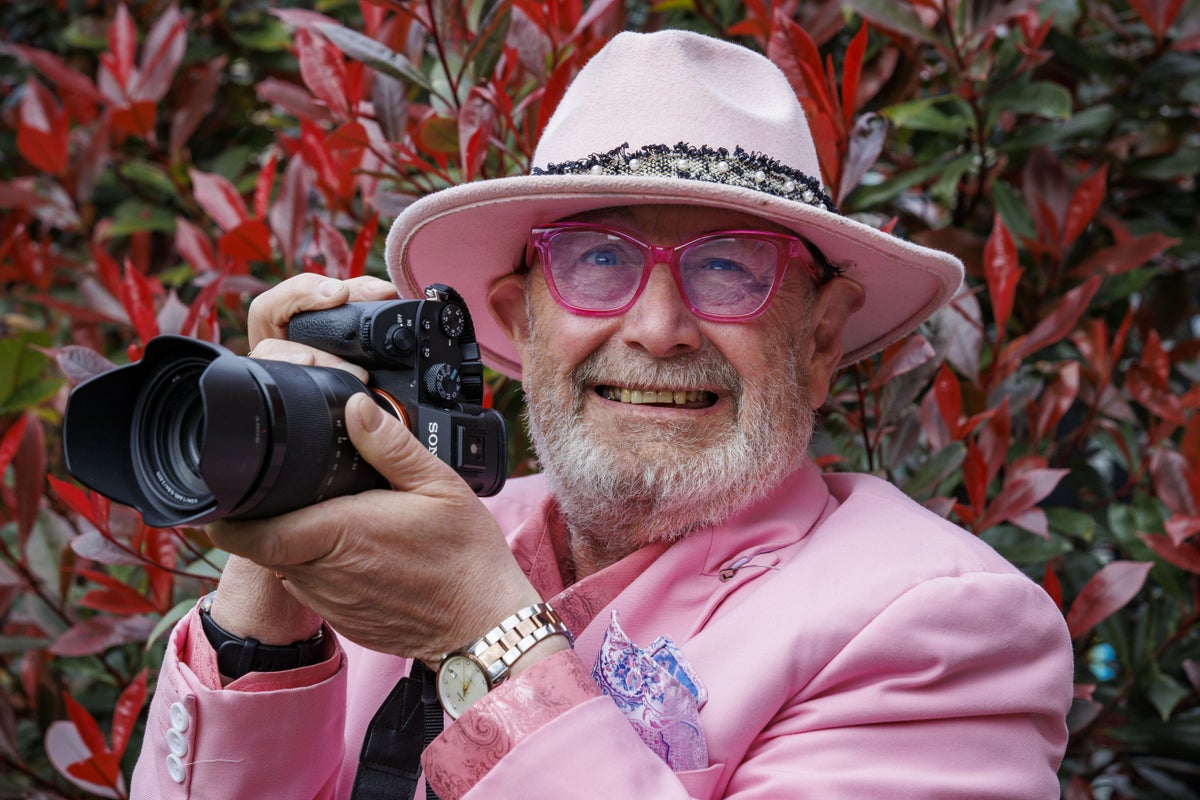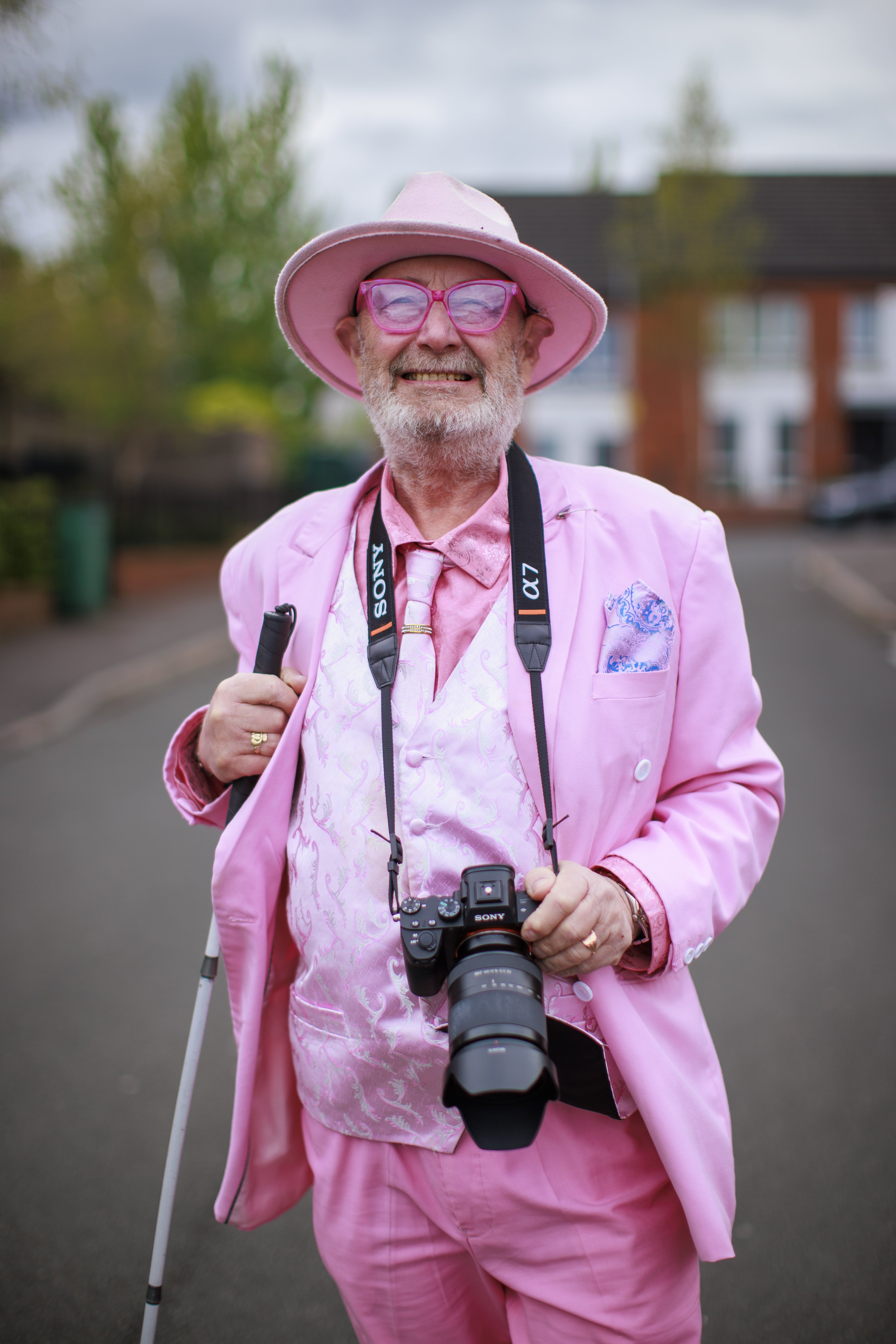
A Belfast man blinded in an attack more than 20 years ago is hoping to realise his dream of studying photography at university.
Aidan Murray, 65, originally from Whiteabbey, said he takes pride in the fact that most people do not realise he has a severe sight impairment as they view his portfolio.
He is registered blind and can see very little at night, but has blurry vision during the day. He focuses a lot in his photography on light.
He also said he enjoys using manual settings across his camera to craft his images, using automatic only for the focus.
Now, after receiving his first camera from his father at the age of seven, he is hoping to go to university to study photography, and go on to work as a photo journalist.
He has faced many challenges in his life, and was an electrician and then a taxi driver before the attack in 2002 left him unable to work.
In an interview with the PA news agency, Mr Murray described the terrifying moment he heard the shout “kill the bastard”.
“I was walking home from a bar and I got attacked by a sectarian gang, and as a result I lost most of my sight and half my left ear was bit off,” he said.
“February 12, 2002, it’s not a date I will ever forget.
“I had decided to walk home, I wasn’t too far from the bar, when I heard them say ‘kill the bastard’. So I started to run but tripped on the pavement and they caught up with me,
“A passing motorist drove into them to scare them away, and he took me to the Mater Hospital.”
Mr Murray spent many weeks in hospital, was unable to work and became homeless.
“I was a taxi driver at the time, so I was homeless, jobless and penniless,” he said.

He said his photography took a back seat for a long time, but he recently found his way back to it thanks to Belfast Metropolitan College and Belfast Exposed Photography.
He also paid tribute to the victims group Wave for the support they have given him.
“I have always been into photography, my father gave me a camera when I was about seven, he was a photographer too,” he said.
“My first photograph was in Whiteabbey, of the bands marching up to Cloughfern Corner. It was with a bellows camera, I don’t have that camera any more and I don’t have that photograph any more.
“I used to do the odd occasion for friends, and when my niece was born, she wasn’t well, and wasn’t expected to make it, my sister in law asked me to take some photographs of her.
“So I did and I captured this magical picture of her with her eyes open – she survived and she’s over 30 now.”
He said he started attending photography courses because he wanted to learn how to use a camera properly.
“I had this new Sony and I wasn’t using it properly, so I went to Belfast Met and did level one photography there and learned how to use the controls on the camera,” he said.
“They didn’t do level two, so I went to Belfast Exposed and they’ve been very helpful.
“I have now done level two and level three with Belfast Exposed, and with the support of Wave Trauma Centre, I’m hoping to do level four, which is quite an intense course, a six-month course, and after I’ve done that then I can go on to Ulster University to study photography.
“Because of my eyesight, I can’t see what tutors are doing on the big screen, so I’m hoping to get funding for support for the level four course.”
He described how his sight impairment gives him a different perspective.
“Everything in front of me is blurred, so when I’m taking a photograph I use auto focus.
“It’s only auto I use to get it sharp enough, and continuous shooting to capture every second to get the photograph I want,” he said.
“Last year I went round to Titanic Quarter and was walking around taking photographs of the cranes.
“I wanted to capture the sunrise coming through the cranes but I was too late, but it was a misty foggy morning, some of them (photographs) are in black and white, and they’re pretty effective, in my opinion they’re pretty good.
“There are some photographs in my portfolio for which I did use manual focus, and you can see the effect, whatever I’m focusing on, is in focus, but some of it is in soft focus, it’s a wee bit blurry, but it’s effective. It doesn’t destroy it, it makes the photograph.
“I concentrate a lot on light. Light has a bearing on my life because I need light to see, the way the light shines on buildings and throws shadows.”







